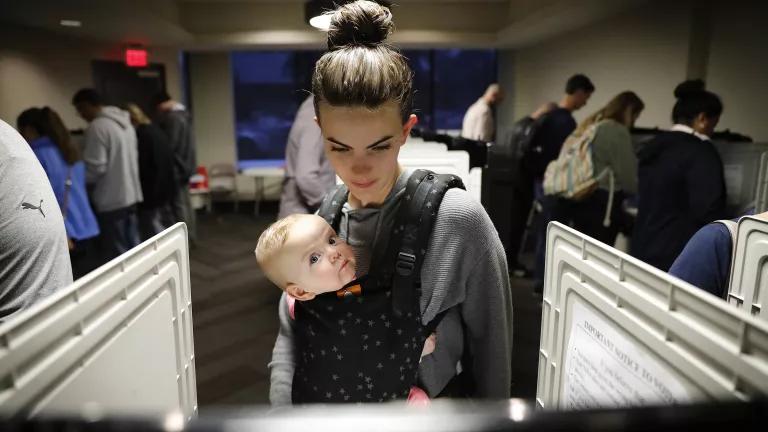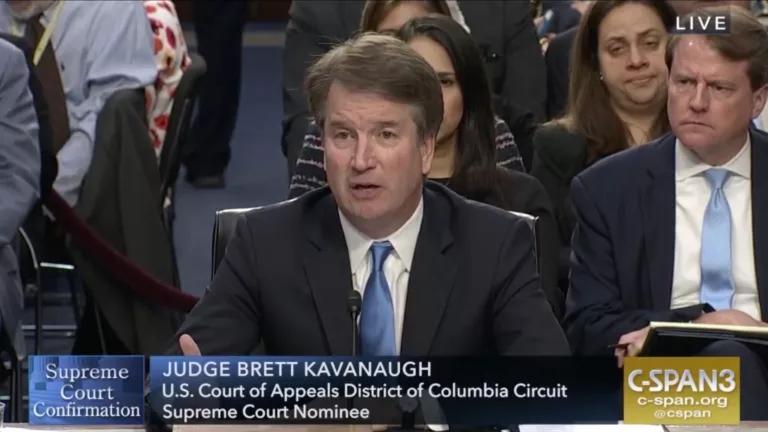The Moral of a "New York Times" Climate Story: We Need to Up Our Game
The United States can still cut carbon pollution 80 percent by 2050—if we take the right opportunities.

Christopher Michel
The United States can still cut carbon pollution 80 percent by 2050—if we take the right opportunities.
The New York Times Magazine has been praised for sounding the alarm on the growing dangers of climate change with its article “Losing Earth: The Decade We Almost Stopped Climate Change,” even as some say the piece didn’t go far enough in laying the blame for insufficient action on the fossil fuel industry and its Republican allies.
What’s not in dispute, the writer Nathaniel Rich reports, is that by 1989, if not before, it was clear to scientists, policymakers, and political leaders that fossil fuel use was putting the world at grave and growing risk of climate catastrophe. In the three decades since then, instead of cutting the carbon dioxide emissions that are driving climate change, we’ve pumped more carbon pollution into the global atmosphere “than in the entire history of civilization preceding it,” Rich writes.
In reading this sobering article, it’s worth remembering the choices we still have before us, the progress we’re making, and the opportunity we have to build on those gains.
Between 2005 and 2017, we cut our carbon emissions in the United States by 14.2 percent while our economy grew 21 percent after adjusting for inflation. How? By moving away from coal and investing in energy efficiency, so we do more with less waste; by building, right here in this country, some of the best all-electric and hybrid cars anywhere in the world; and by getting more clean, homegrown American power from the wind and sun. By upping our game in all three of these ways, we can cut carbon pollution in our country by 80 percent by 2050.
We got a shot in the arm a decade ago when the U.S. Supreme Court ruled that the Environmental Protection Agency could set limits on carbon pollution, under the provisions of the Clean Air Act, if the science shows that this pollution poses a danger to human health. It does.
The result is a legal mandate that the agency set standards to reduce that pollution by, for example, cleaning up our dirty power plants and reducing tailpipe emissions per mile driven in our cars, light trucks, and SUVs, which delivers better gas mileage and saves our families billions of dollars a year at the pump.
The EPA has implemented important measures to do just that, with the 2015 Clean Power Plan and the 2012 clean car and fuel efficiency standards. But President Trump is trying to roll back both of those measures, in a gift to the fossil fuel industry that would come at our children’s expense.

Christopher Michel
Earlier this year, Trump proposed repealing the Clean Power Plan, which calls for cutting carbon pollution from the nation’s dirtiest power plants by roughly one-third by 2030. We’ll fight to keep those standards in place—in the court of public opinion and, if necessary, in the court of law. And on August 2 Trump proposed weakening the clean car standards that are already helping to save our families hundreds of dollars a year at the pump and supporting a renaissance in the U.S. auto industry. We’ll fight to preserve those gains as well, and I encourage you to join me in letting the EPA know why it’s important to stay the course.
While Trump tries to turn back the clock on the progress we’ve made, states and cities are taking the lead in sound policies that give the future a fighting chance. Just this spring, for instance, Virginia committed to a long-term clean energy plan that includes reducing carbon pollution by investing more than $1 billion in energy efficiency and building enough wind- and solar-generating capacity to power some 2 million homes. Ohio approved a $10 million program proposed by the Midwest utility AEP to set up public charging stations to juice up electric cars across the Buckeye State. And just last year, the nine eastern states that belong to the Regional Greenhouse Gas Initiative pledged to cut carbon pollution from dirty power plants by at least 30 percent by 2030.
Globally we’re making progress too. Three years ago in Paris, every country in the world put real plans on the table to curb carbon emissions in the decades to come. It’s not just table talk. Private analysts say we’ll invest some $7 trillion, globally, in clean energy over the next two decades or so, fueling a shift away from the dirty fossil fuels driving climate change.
President Trump has said he’ll withdraw U.S. participation from the Paris agreement. But sidelining American workers in the economic play of our lifetime, breaking our promise to the rest of the world and leaving our children to pay the price, is exactly the wrong way to go. Trump would take us back down the very dead-end road Rich detailed in his piece for the Times.
“Losing Earth” can be read as Greek tragedy. It’s not for the faint of heart. Neither, though, is environmental advocacy, nor has it ever been. Being an environmentalist always has meant being an optimist and summoning hope in the face of long odds. It’s not about being a Pollyanna. It’s about vesting faith in what matters most.
I believe in the human spirit. I believe in our capacity for change. I believe we understand, in the heart of every heart, that we serve no higher purpose than to leave our children the best world we can.
We missed the chance to do that a generation ago. We haven’t yet gotten it right. Time is running out, but, as Rich concludes, it’s not too late for hope.



